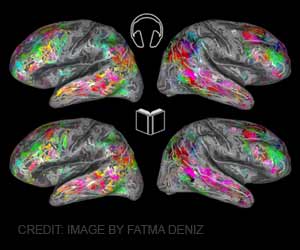People do, in fact, synchronize what they remember and what they forget after sharing memories with one another, suggested a new research.

‘People do, in fact, synchronize what they remember and what they forget after sharing memories with one another, suggested a new research.’





"If you're a policymaker trying to annihilate misconceptions, you should identify a piece of information that's relevant, accurate, and, importantly, conceptually related to the misconception," said lead author Alin Coman, assistant professor of psychology and public affairs. "Keep practicing that information. Send repeated messages into the community. If people care about the topic, they are going to talk to one another about it and by spreading the accurate information, psychological research shows, they will likely forget about the misconception." Coman and his co-authors - Ida Momennejad, a postdoctoral fellow at Princeton; Andra Geana, a postdoctoral research associate from Princeton; and Rae Drach, a graduate research assistant at the University of Albany - recruited 140 participants through Princeton University's online recruitment system to conduct the study.
Participants were grouped into 10-member communities and came together in the same classroom, sitting at computer terminals. Participants used a program called Software Platform for Human Interaction Experiments (SoPHIE) to communicate.
"We designed this software platform to expedite the communication process," Coman said. "All phases of the study took about 30 to 40 minutes for each group to complete. It's a very fast way to have these people communicate, and computer chatting makes this much more standardized. We were able to control the network structure and properly study it."
In the first phase of the study, participants read four random pieces of information about different American Peace Corps volunteers. The stories centered on Rachel, a volunteer who worked on environmental protection in South America; Alex, who was involved with refugee assistance in Europe; Christine, who focused on post-disaster recovery in Asia; and Jim, who was engaged with HIV/AIDS prevention in Africa. Each volunteer's story included a picture of the person working in the field.
Advertisement
Afterward, participants were asked to remember the information they studied. They were given the name of each volunteer as a cue and instructed to type out on the computer what they could remember about that volunteer.
Advertisement
Following the conversations, each participant was asked to remember the information originally presented about the volunteers. As in the second phase, they were given the name of each volunteer as a cue.
Based on both recall phases, the researchers calculated how similar the individual memories were within each 10-member community. The results were in alignment with what the researchers had predicted: conversationally sharing stories with others influences the degree to which individuals of a group end up remembering the story in similar ways.
"Our study shows that when we talk about memories of collectively experienced events with others, we start remembering these memories in similar ways. Importantly, as a group, we also tend to forget the same information following these conversations. We are, in essence, synchronizing our memories at a community level," Coman said.
The study is a first step toward understanding collective memories in a group network. Coman and his collaborators are currently working toward studying larger group networks to see how group size influences the degree of mnemonic convergence. They also are investigating how individuals come to experience similar emotions following conversations about topics relevant to a certain group.
"Understanding the formation of collective memories is of utmost importance," Coman said. "They are central to human functioning. On one hand, these shared memories affect people's attitudes, their decisions and how they collectively solve problems. On the other hand, these findings have a more applied scope: policymakers could use them to measure and forge convergent memories in communities affected by epidemics of biological or social nature, like knowledge about the Zika virus or the propagation of stereotypes."
The paper, "Mnemonic convergence in small-scale networks: The emergent properties of cognition at a social level," was published in PNAS.
Source-Eurekalert








